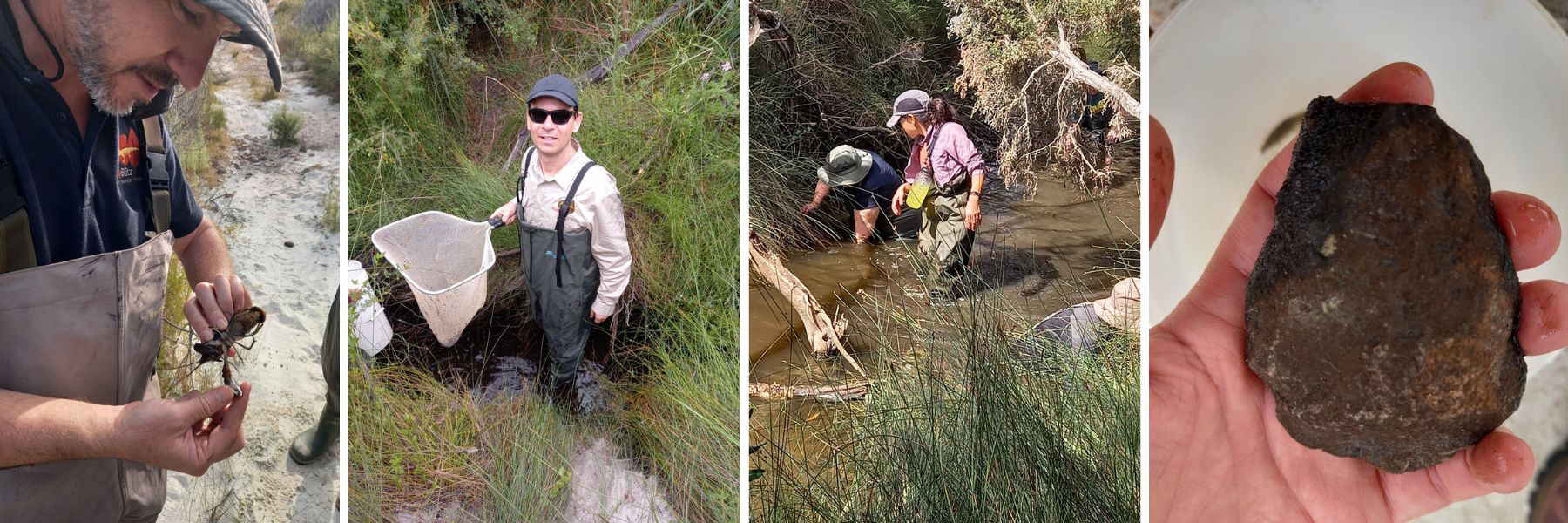With low tide at 4am, it was a bright and early start to our day with the Fish Team, heading out to Lucky Bay by 6am (who can sleep anyway with all the excitement!!!). Overcast skies and white sands lay before us as we were led by Dr Michael Hammer and set out to our sampling spot, on the far Western edge of the Bay. Jenelle, Ana and Nicole were kitted out in their wetsuits, ready to embrace the waters of the Southern Ocean. Teachers donned waders and skirted the shallows. We used a netting technique to collect marine organisms, mostly interested in fish but also crustaceans and anything else we could find! As the first haul neared the enormous granite rock that doubled as the ‘shore’ the net was carefully manoeuvred to reveal the ‘catch’. Strands of seaweed were carefully picked up and shaken to ensure the live specimens fell out for us to look at! So many species I had never encountered before, and here we were assisting the Taxonomists to collect and identify them. So cool! Not only was the Bay lucky, so was I!!!
Now there’s no time to waste on a Bush Blitz expedition. There is biodiversity sampling to be done! As soon as we were back from our work with the Fish Team, it was time to head out with Dr Michael Klunzinger from the Mollusc Team, together with Ana. Off we set to a freshwater creek where we were hoping to find a threatened mollusc species. The sampling technique used was; 1. Find shallow creek, 2. Put on waders, 3. Walk downstream on the bank, around 50m, 4. Enter creek and place hands into the creek bed, digging fingers in about 10cm to feel for a hard shell, about the size of Arrowroot biscuit, all while not being able to see for the turbidity! Sounds easy, right?! As it turns out, it was actually not-so-easy, but a lot of fun. With my arms and hands submerged, feeling around in the sandy creekbed, I did find a hard object, and very excitedly dug it out with my fingers, announcing ‘I have found one!’. As I looked closer, I had indeed found one….. one ‘mussel sized’ rock. So disappointing! And that was as close as I got to helping the Mollusc Team.
So, you may well think that was all for the day, oh no, this is Bush Blitz, the excitement is far from over! Next, we were back with the Fish Team, this time looking for freshwater fish and yabbies in a creek, a different creek! After our drive out to the site, Dr Michael showed us an unusual pincer formation he had observed in a previously collected dead specimen of yabby, and he was keen to find if there were any living organisms to observe. We bush trekked our way along the narrow creek and recorded the GPS location (yes, you read that correctly Geography students - a real application of recording latitude and longitude! South then East!). Our team in waders made their way slowly upstream. Slowly, mostly being due to the overgrown nature of the site. A new technique of netting was demonstrated to do the sampling. Individual nets were used this time and stirring up the sediment and scooping across it and pulling back to 'trap' anything that was disturbed. We caught two freshwater fish and yabbies. Some of the yabbies were being taken back to the lab for closer examination of their pincers.
